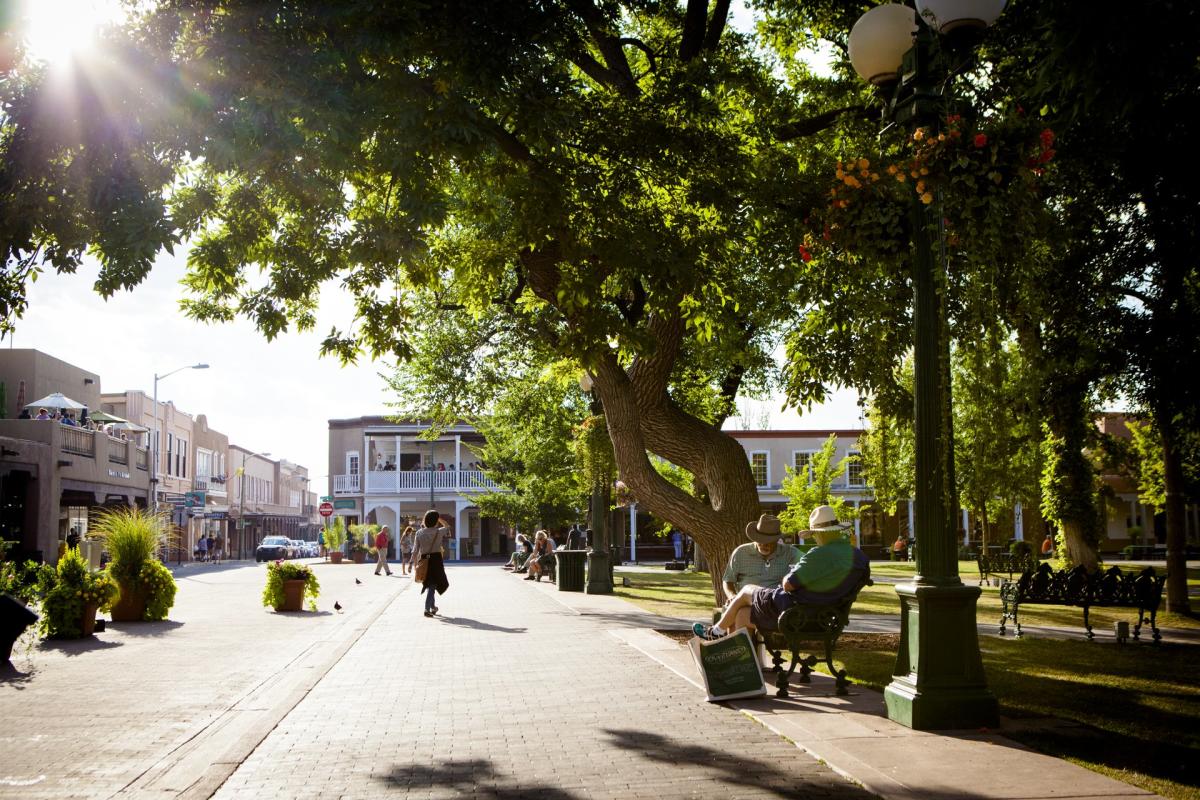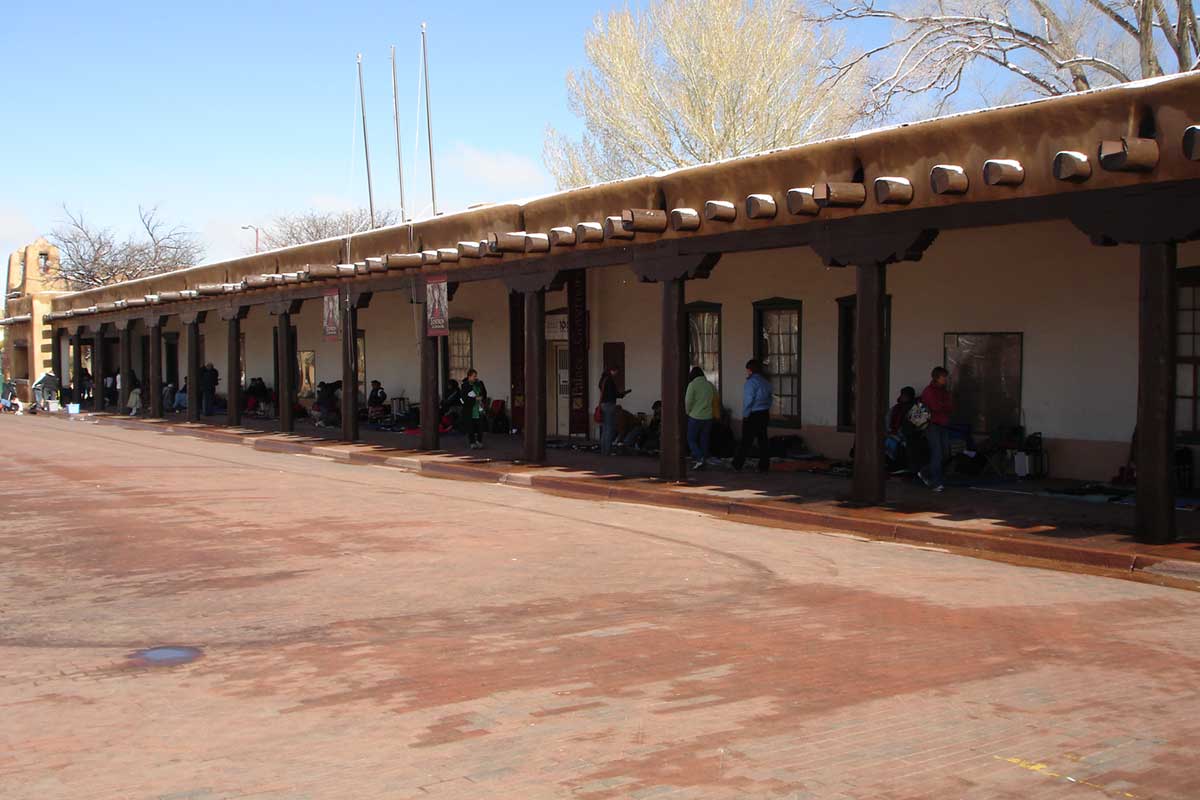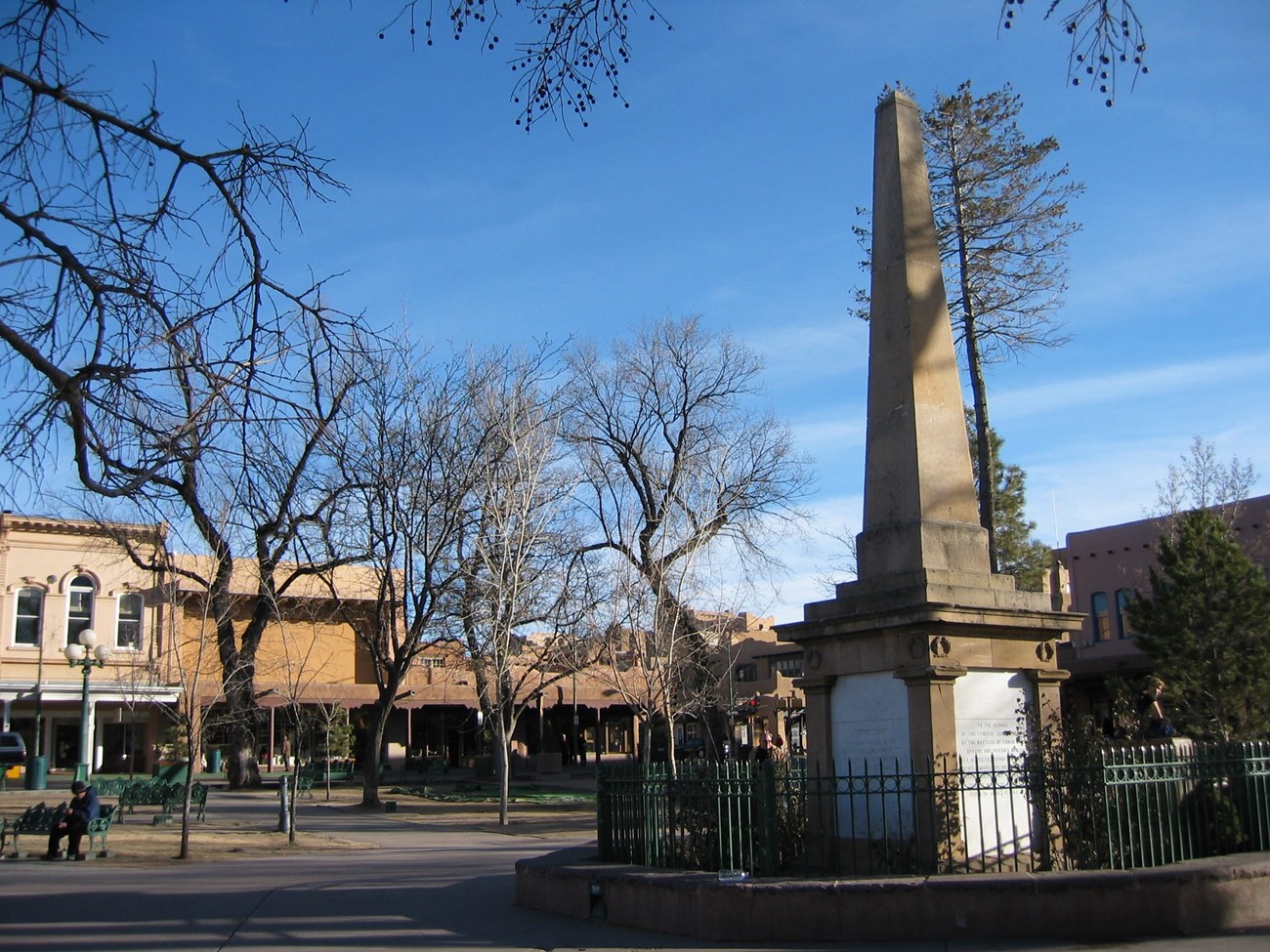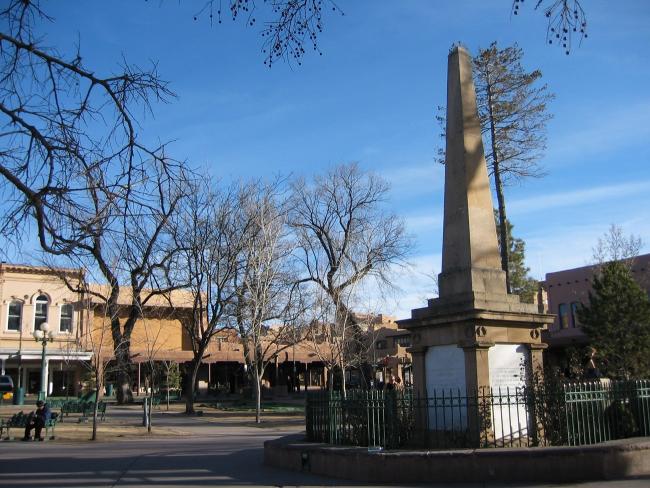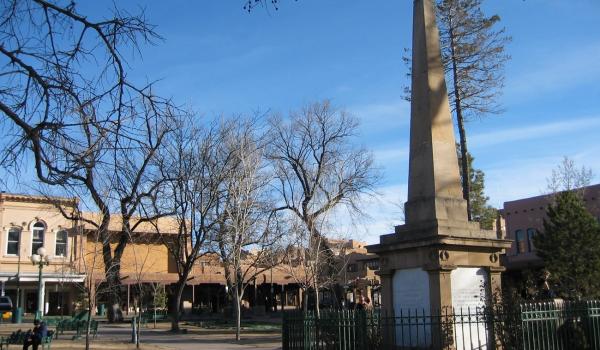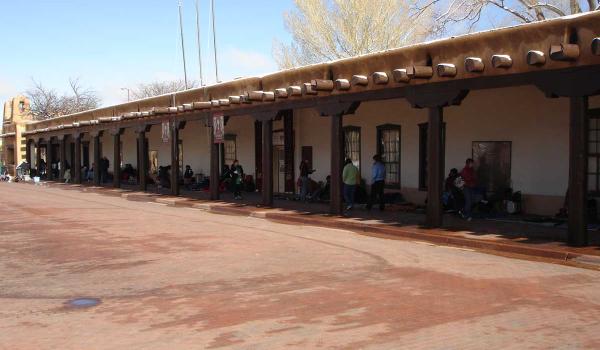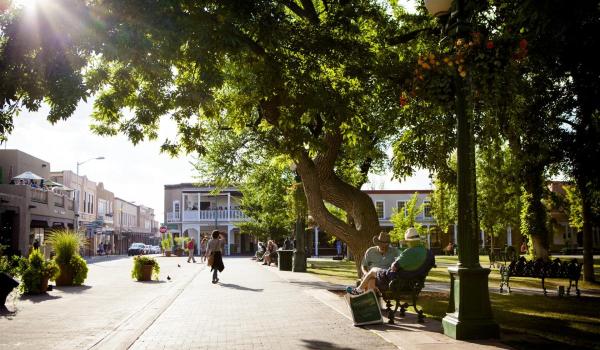From the founding of New Mexico in 1598 until the Pueblo Revolt of 1680, which forced the Spanish and their allies to flee to El Paso del Norte, the triannual supply convoys were vital for the survival of settlers and missionary efforts. With the recovery of the province in 1693, the Spanish established a cordial relationship with the Pueblo Indians.
Pedro de Peralta was appointed governor by the Spanish Crown. He designed the new town with a central plaza surrounded by the institutions of the Church and the State, with space for political ceremonies, religious processions, markets, and festivals. Around this area, the elite who came to the town following the Camino Real were established.
Since colonial times, the plaza gained prestige as the terminus of important Western historical routes and as a cultural and commercial destination, as products like silk, glass beads, Chinese porcelain, and other international luxury items arrived here. A 1776 map shows that roads radiate from the plaza to the north and south.
Mexico's independence in 1821 opened the borders to international trade through the Camino Real and the Santa Fe Trail, which connected New Mexico with markets in the U.S., turning Santa Fe into a major commercial center with a reputation as a mysterious melting pot of cowboys, Indians, bandits, soldiers, police, and residents.
Today, the town of Santa Fe developed around the plaza, whose shape reflects centuries of change. Although it is invented, its unique architectural style identifies Santa Fe worldwide and attracts visitors as an important historical point of international exchange. To the north stands the Palace of the Governors, and to the east, the Basilica Cathedral of St. Francis, where the adobe parish once stood.
With Americanization, the modern plaza reflects little of the Spanish and Mexican character of earlier times but remains a core of Santa Fe's cultural and civic identity, drawing visitors from around the world after 400 years since the first travelers traversed El Camino Real.



